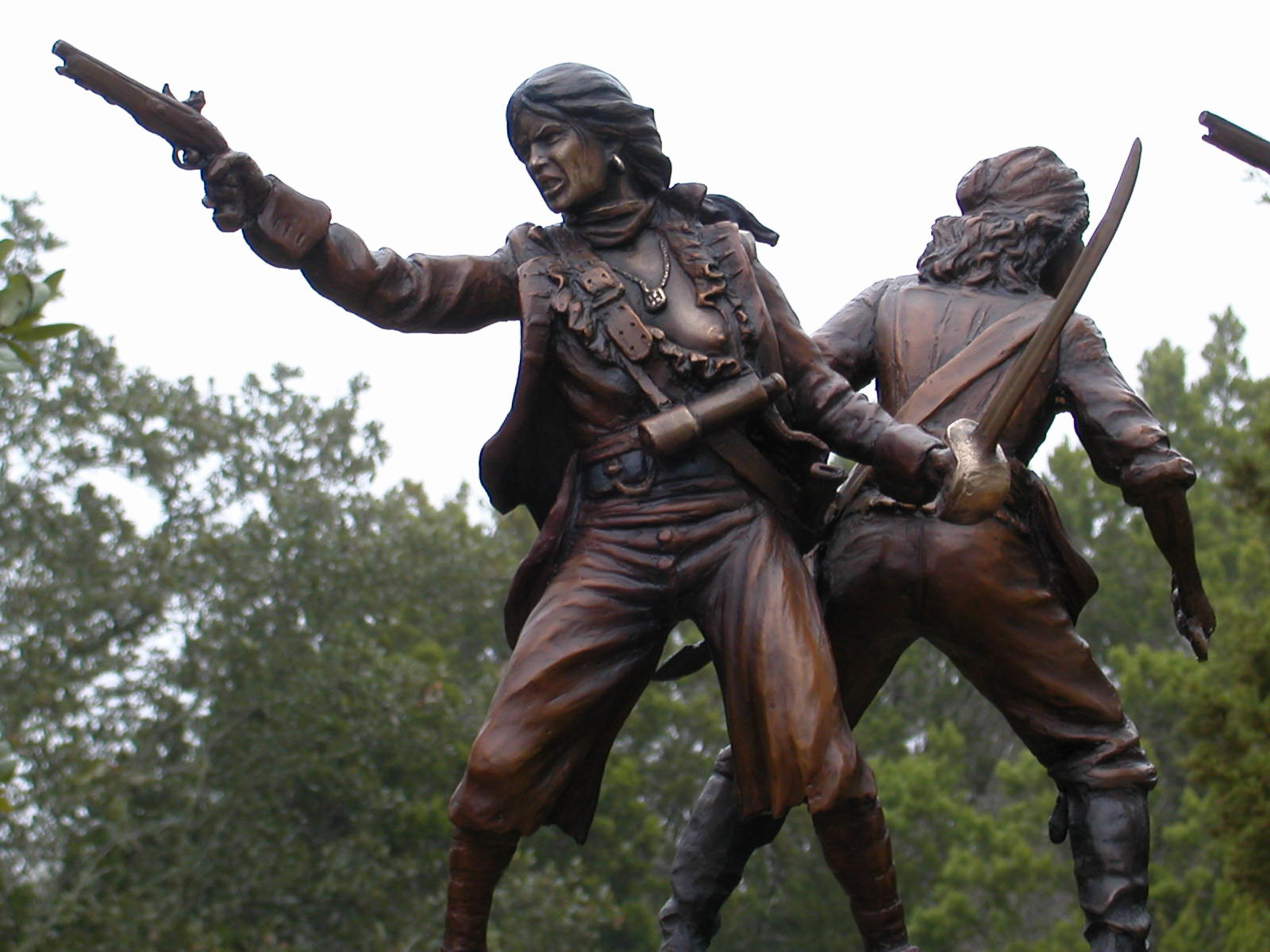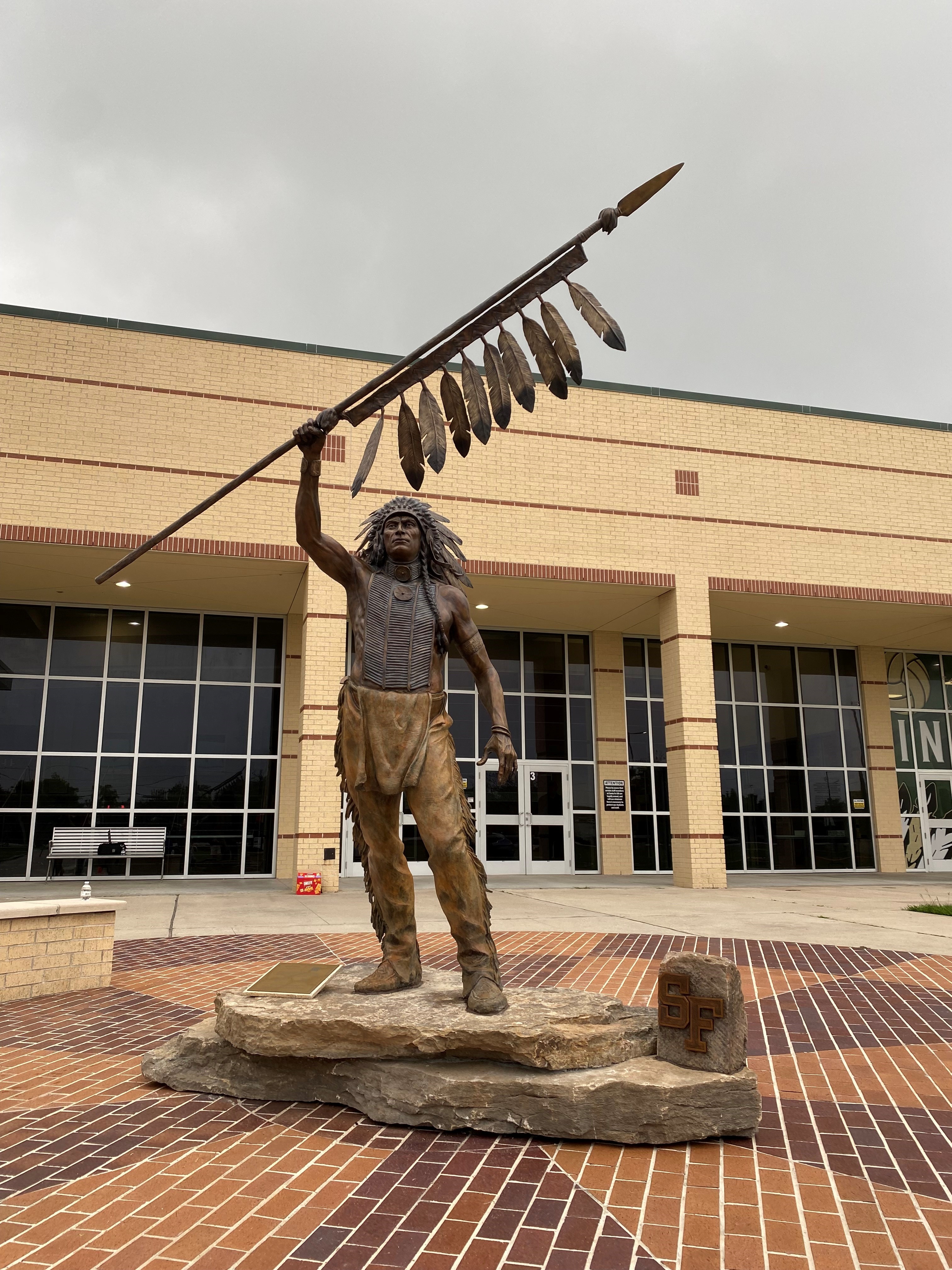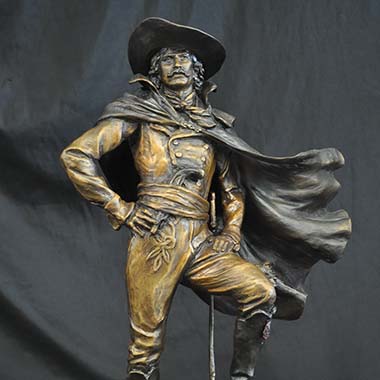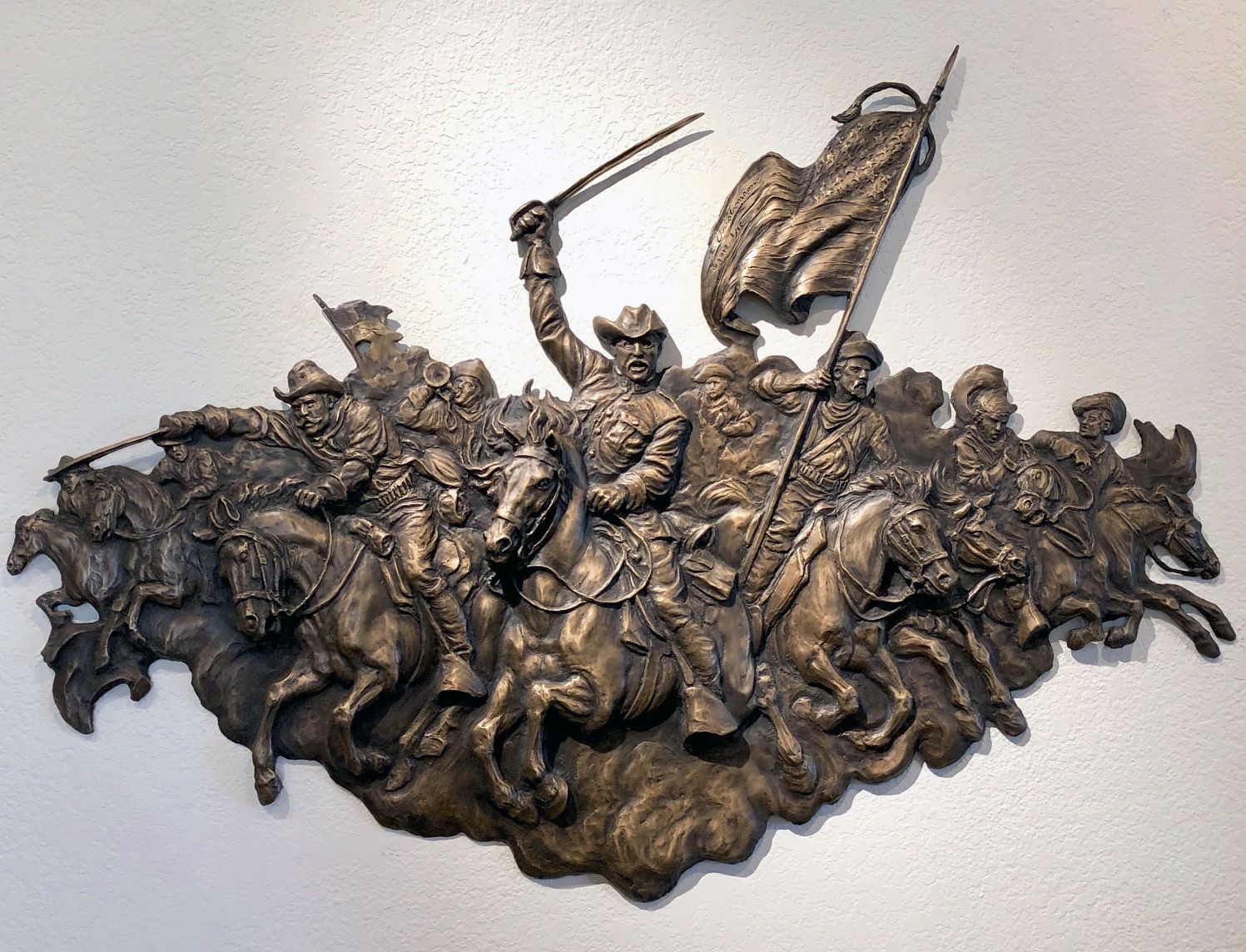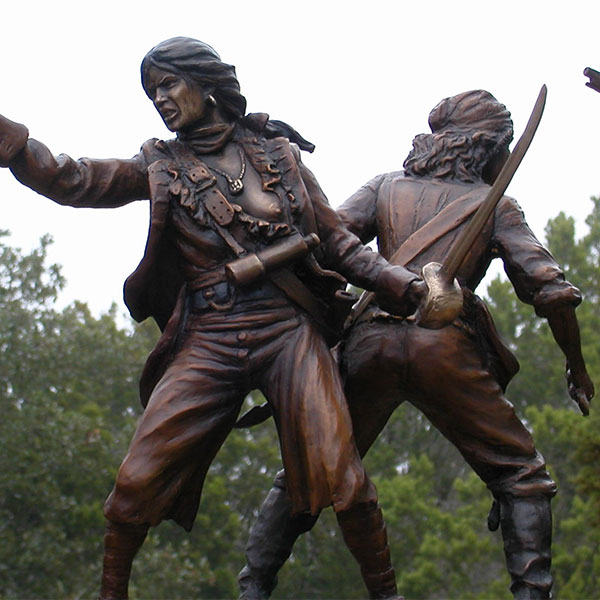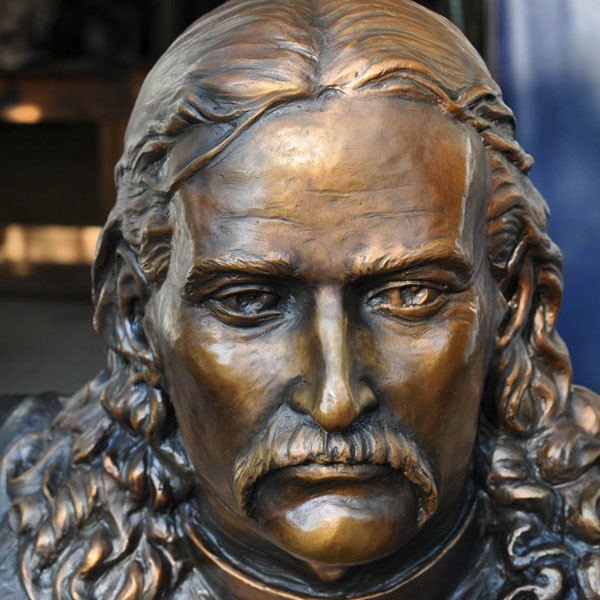Sisters of the Sea
ANNE BONNY AND MARY READ
Brief
Anne Bonny and Mary Read were pirates, as renowned for their ruthlessness as for their gender, and during their short careers challenged the sailors’ adage that a woman’s presence on shipboard invites bad luck.
Much of what we know about Bonny and Read comes from a 1724 account titled A General History of the Robberies and Murders of the Most Notorious Pyrates, by Captain Charles Johnson (which may be a nom de plume for author Daniel Defoe).
A General History puts Bonny’s birth in Ireland, circa 1698. Her father, an attorney named William Cormac, had an affair with the family maid, prompting his wife to leave him. The maid, Mary Brennan, gave birth to Anne, and over time William grew so fond of the child he arranged for her to live with him. To avoid scandal, he dressed her as a boy and introduced her as the child of a relative entrusted to his care. When Anne’s true gender and parentage was revealed, William, Mary, and their child emigrated to Charleston, South Carolina. Mary died in 1711. Shortly afterward, the teenaged Anne acquired a “fierce and courageous temper,” reportedly murdering a servant girl and beating half to death a man who tried to rape her.
William, now a successful planter, disapproving of his daughter’s behavior and marriage to a sailor named James Bonny in 1718, disowned Anne. She and Bonny went to New Providence (now Nassau) in the Bahamas, where James became a snitch, turning in pirates to Governor Rogers to collect the bounties on them. Meanwhile, Anne spent most of her time drinking at local saloons and seducing pirates; in A General History, Johnson contends that she was “not altogether so reserved in point of Chastity,” and that James Bonny once “surprised her lying in a hammock with another man.” Anne grew especially enamored of John “Calico Jack” Rackam, so-called for his affinity for garish clothing, and left her husband to join Rackam’s crew. 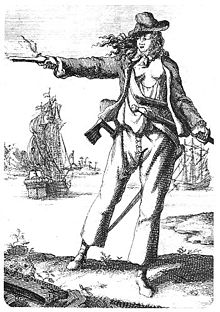
A surprising number of women ventured to sea during this period. They were servants, prostitutes, laundresses, cooks and occasionally sailors, naval officers, whaling merchants or pirates. Nevertheless, female pirates remained a both a novelty and perceived liability. For example, Blackbeard banned women from his ship, and if his crew took one captive, she was strangled and pitched over-board. Anne wasn’t deterred by this sentiment. Far from it, after joining Rackam’s crew, she silenced a complaining shipmate by stabbing him in the heart. Most of the time Anne lived as a woman as Calico Jack’s lover and confidante, but during engagements with other ships she dressed as like a man.
Accounts vary as to how Anne met Mary Read. According to Johnson, Rackam’s ship captured a vessel with Mary aboard somewhere in the West Indies, and she was taken prisoner. After this incident, Anne, dressed in female attire, tried to seduce the handsome new recruit. Mary, perhaps fearing repercussions from Calico Jack, confessed to Anne she was actually a woman — and bared her breasts to prove it. Anne vowed to keep Mary’s secret and the women became friends – perhaps even lovers.
They discovered they had much in common; Mary was also illegitimate. Her mother’s first child (this one by her husband) was a boy, born shortly after her husband died at sea. Mary’s mother-in-law took pity on the widow and offered to support her grandson until he was grown, but he died as well. Mary’s mother quickly became pregnant again, gave birth to Mary, and, in order to keep receiving money from her husband’s family, dressed her daughter to resemble her dead son. However, her grandmother caught on and terminated the arrangement. To make ends meet, Mary’s mother continued dressing her as a boy and occasionally rented her out as a servant.
Mary excelled at living as a man. Around age 13, she was a “powder monkey” on a British man-of-war, carrying bags of gunpowder from the ship’s hold to the gun crews. There, she fell in love with her bunkmate and divulged her secret to him. Initially, the soldier suggested that Mary become his mistress. She spurned him. Perhaps, as Johnson write, “he thought of nothing but gratifying his Passions with very little Ceremony.”
Mary resumed life as a man and sailed for the West Indies on a Dutch ship, which was soon captured by English pirates. The crew, believing Mary to be a fellow Englishman, encouraged her to join them. Calico Jack Rackam was the quartermaster of her new crew, and niether he or his shipmates ever suspected Mary’s true gender. She was aggressive and ruthless, always ready for a raid, and cursed like a sailor. Loose clothing hid her breasts, and no one thought twice about her lack of facial hair; her mates, most of them in their teens or early twenties, were also smooth-faced. It’s likely that Mary suffered from stress and poor diet while serving in the army, factors that could have interrupted or paused her menstrual cycle.
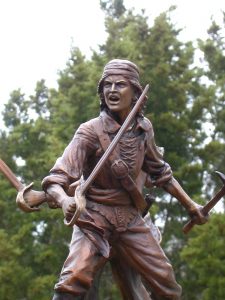 Rackam became jealous of Anne’s relationship with Mary, and one day burst into her cabin intending to slit her throat. Mary sat up and opened her blouse. Rackam agreed to keep Mary’s secret from the rest of the crew and continued to treat her as an equal. During battles Anne and Mary fought side by side, wearing billowing jackets, long trousers and handkerchiefs wrapped around their heads. Each wielded a machete and pistol. “They were very active on board,” victim later testified, “and wiling to do any Thing.”
Rackam became jealous of Anne’s relationship with Mary, and one day burst into her cabin intending to slit her throat. Mary sat up and opened her blouse. Rackam agreed to keep Mary’s secret from the rest of the crew and continued to treat her as an equal. During battles Anne and Mary fought side by side, wearing billowing jackets, long trousers and handkerchiefs wrapped around their heads. Each wielded a machete and pistol. “They were very active on board,” victim later testified, “and wiling to do any Thing.”
The summer and early fall of 1720 was lucrative for Rackam’s crew. In September, they captured seven fishing boats and two sloops near Harbor Island. Near midnight on October 22, Anne and Mary were on deck when a sloop glided up beside them. They realized it was one of the governor’s vessels, and shouted their crewmates to alarm. A few obliged, Rackam included, but most were passed out from drinking. The sloop’s captain, Jonathan Barnett, ordered the pirates to surrender, but Rackam began firing his swivel gun. Barnett counterattacked, and the barrage disabled Rackam’s ship reducing the few men on deck to cowering in the hold. Outnumbered, Rackam surrendered and asked for quarter.
Anne and Mary refused to surrender. They faced Barnett’s crew alone, firing their pistols and swinging their cutlasses. Mary was so disgusted she peered into the hold and yelled, “If there’s a man among ye, ye’ll come up and fight like the man ye are to be!” When none responded, she fired into the hold, killing one of them. Anne, Mary and Rackam’s entire crew were overpowered and imprisoned.
Calico Jack Rackam was sentenced to hang on November 18, and his final request was to see Anne. She replied: “If you had fought like a man, you need not have been hang’d like a dog.” Ten days later, she and Mary stood trial at in St. Jago de la Vega, Jamaica. Both of them pled not guilty to all charges. The most convincing witness was Dorothy Thomas, whose canoe had been robbed of during one of the pirates’ raids. She testified that Anne and Mary threatened to kill her for testifying they were women, and that “the Reason of her knowing and believing them to be women then was by the largeness of their Breasts.”
Anne and Mary were found guilty and sentenced to be hanged, but their executions were stayed—because, as lady luck would have it, they were both “quick with child.”

